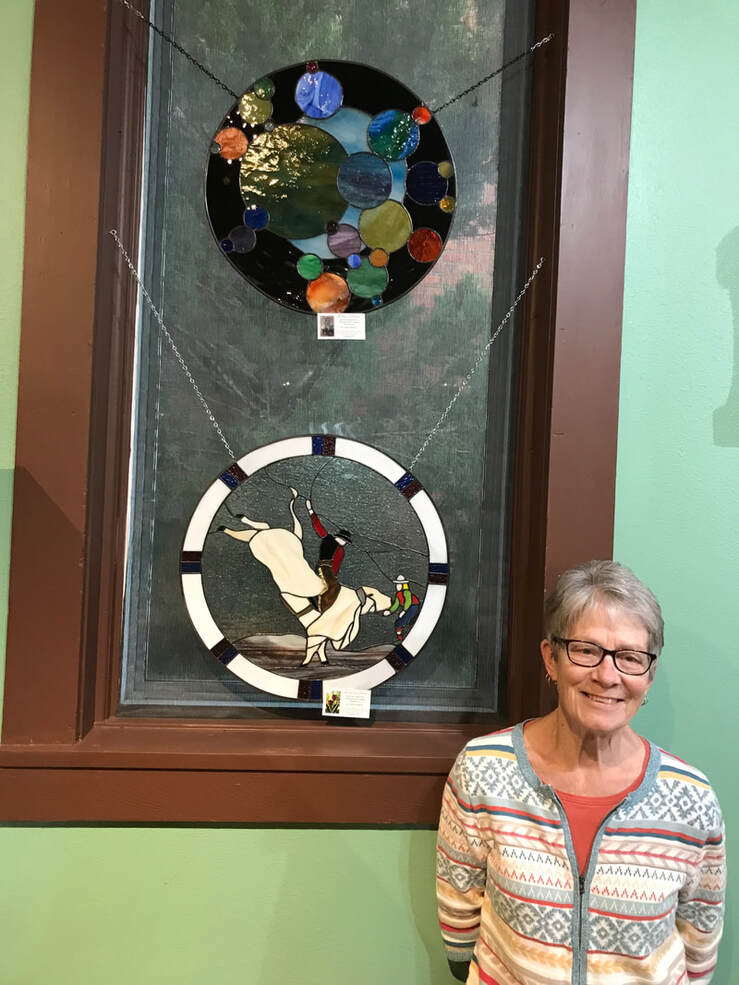FEATURED ARTIST for MAY: DODE JUELFS
My name is Dode Juelfs. I grew up in Western Nebraska. Inspired by my mom to "always keep my hands busy" has led me to a lifetime of quilting, sewing, knitting and crocheting. In the early sixties there was a subscription called Craft of the Month. i would be so excited when it arrived in the mail because I knew it was going to be something new I could create! Other hobbies I enjoy are traveling with my husband, visiting grandkids and reading. Recently I've been doing Laura Heine collages. I love to do them and give them as gifts for family and friends.

Dede Adams from Hershey, Nebraska has filled our windows with her wonderful stained glass. These will be shown throughout the season.
